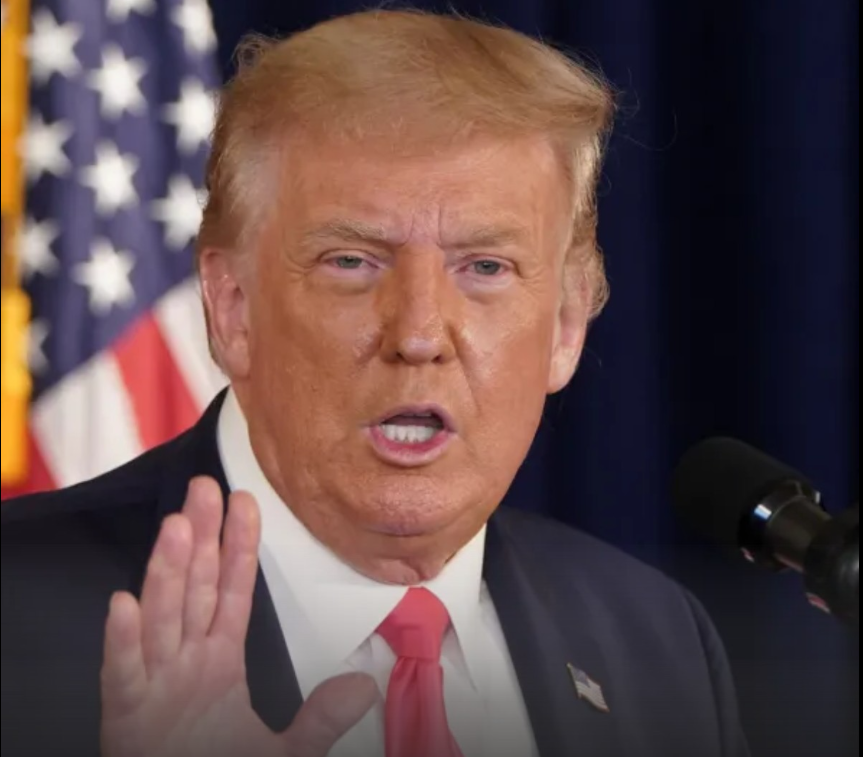A check funded by tariffs, delivered from what he describes as a supercharged economy finally turning the tables on foreign competitors. At rallies, in interviews, and across social media, the promise sounds simple: the government will collect the money, and the people will receive it back. But beneath the bold claims and confident tone lies a far more tangled reality. The numbers are shaky, key legal questions remain unanswered, and the timeline has quietly shifted from “soon” to “maybe 2026.” Between the promise and the payout stand Congress, the courts, and the cold math that refuses to bend to political enthusiasm.
Trump’s proposed $2,000 “tariff dividend” is not yet a functioning policy — it’s an idea that has been spoken into the world far faster than it has been built. The announcement generated excitement because it was concrete enough to imagine and generous enough to spark hope. But officials behind the scenes admit that many of the most basic details still don’t exist. No final eligibility rules. No set schedule. No clear structure for distribution. Even within the administration, different advisors describe different versions of the plan depending on the day.
Preliminary discussions at the Treasury Department suggest that any version of the dividend would likely include income limits, possibly capping eligibility near $100,000 for single filers. Some drafts rely on direct cash payments; others replace checks with tax credits, which would shrink the benefit for those who need the money immediately. All versions require Congress to pass legislation — and Congress is currently locked in battles over spending, taxes, deficit levels, and competing priorities. Every path forward demands cooperation that Washington has not shown for years.
Complicating everything further is a legal fight with enormous implications. A significant portion of the tariff revenue Trump wants to use depends on emergency trade powers that the Supreme Court is now reviewing. If the Court rules those tariffs unlawful, the government may be required to refund that revenue instead of reallocating it. That would eliminate one of the main funding streams for the supposed dividend and could leave the entire policy without a financial foundation. In short: the money Trump wants to distribute may not legally belong to the government at all.
Economists also warn that even with all existing tariffs intact, the revenue simply doesn’t reach the levels needed to send $2,000 to every qualifying American every year. The gap between what tariffs bring in and what the dividend would cost is enormous — tens of billions of dollars short. Filling that gap would mean raising taxes elsewhere, borrowing more money, or cutting major programs, each option carrying its own political consequences.
And then there is the timeline. Public statements often imply that Americans will see payments “soon,” but internal estimates suggest that even under the smoothest political conditions, the earliest feasible rollout would be late 2025 or 2026. Designing a national distribution system, passing legislation, securing funding, and resolving legal questions all take time, especially in a polarized Congress heading into an election cycle.
Still, the promise resonates. Many households are struggling with rising prices, medical expenses, housing costs, and wages that feel stretched thinner every year. A $2,000 boost sounds like relief, dignity, and breathing room after years of economic uncertainty. That emotional power is not insignificant — it shapes elections, public expectations, and political momentum.
But emotion cannot fix the structural obstacles standing in the way. The courts will decide whether the tariffs survive. Congress will decide whether the dividend exists. And the math will decide whether the numbers add up.
For now, the “tariff dividend” lives in the space between campaign message and actionable policy — a space full of hope, but empty of guarantees. Its future depends on legal rulings still months away, negotiations that haven’t started, and revenue that may not materialize. The public may be listening, but patience is not infinite.
Until the legal battles conclude, until Congress drafts and passes a bill, and until the funding is secured, the promise remains just that: a promise. Whether it becomes a real payment or remains a political headline will be determined not by speeches, but by the institutions now quietly weighing its fate.
